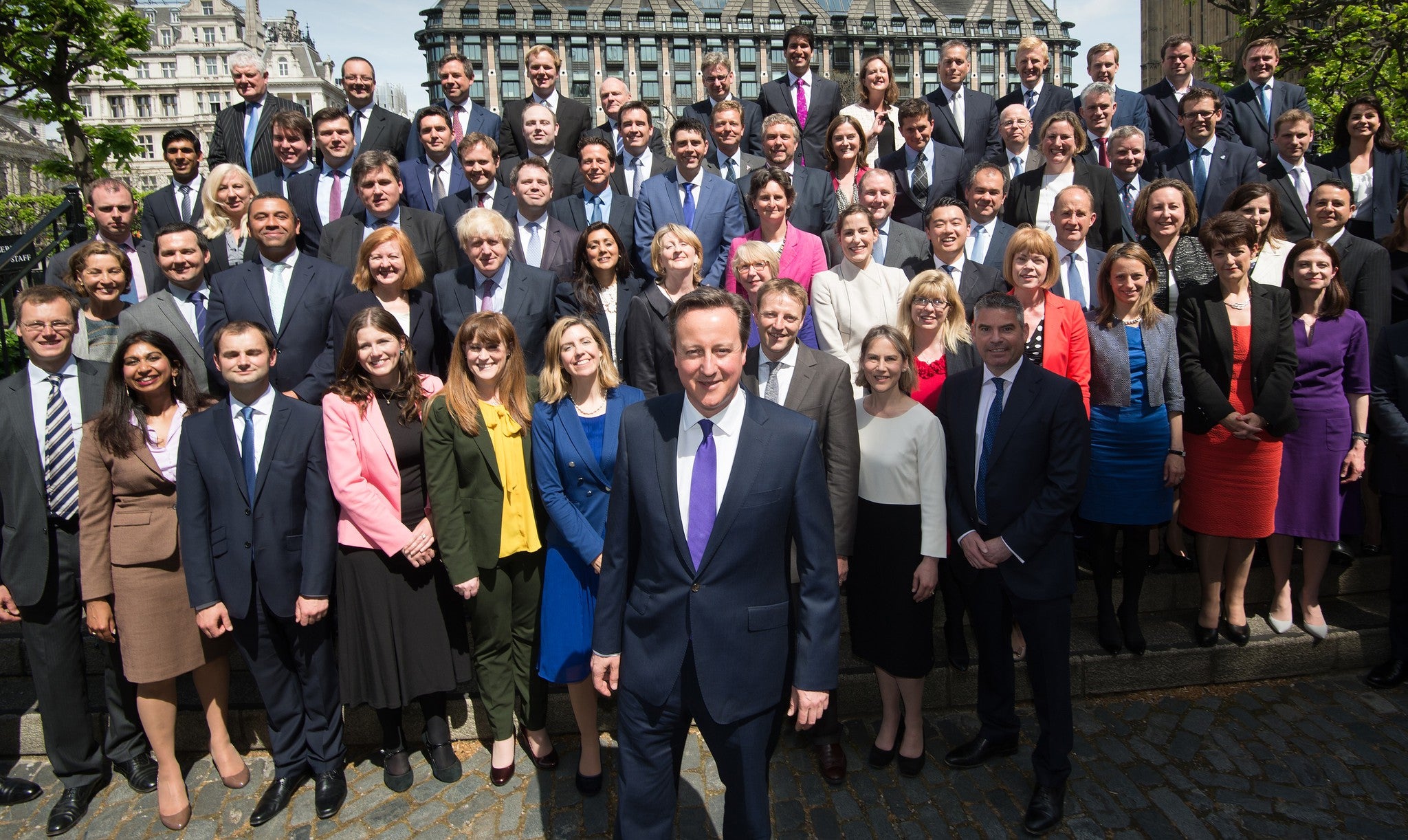12 charts that show just how different the Tory Cabinet is to the people it claims to represent
How representative is Britain's representative government?

Your support helps us to tell the story
From reproductive rights to climate change to Big Tech, The Independent is on the ground when the story is developing. Whether it's investigating the financials of Elon Musk's pro-Trump PAC or producing our latest documentary, 'The A Word', which shines a light on the American women fighting for reproductive rights, we know how important it is to parse out the facts from the messaging.
At such a critical moment in US history, we need reporters on the ground. Your donation allows us to keep sending journalists to speak to both sides of the story.
The Independent is trusted by Americans across the entire political spectrum. And unlike many other quality news outlets, we choose not to lock Americans out of our reporting and analysis with paywalls. We believe quality journalism should be available to everyone, paid for by those who can afford it.
Your support makes all the difference.Britain is supposed to have a representative government - but just how similar is it to the rest of the population?
Going to university at Oxford or Cambridge is a very rare thing: according to the Social Mobility and Child Poverty Commission fewer than 1% of the population has gone to one of Britain's two elite universities.
(We have used the figure of 0.5% as a representative of a negligible amount)
That all changes if you're a member of the Conservative Cabinet, however – most now at Cameron's top table went to either Oxford or Cambridge.
Some might argue that Oxbridge are the best universities – and it's a good thing to have people from them in government.
Critics would say it's difficult to represent modern Britain or guarantee cognitive diversity when you've all had been hanging out in the same student union bars.
The same is true of private schooling.
Although it is significantly more common to have done so than to attend Oxbridge, but still very much a minority pursuit.
Looking at the Cabinet though, there are significantly more privately educated attendees than the people who voted them in.
Which doesn't compare favourably to the actual proportion of the public who attended public school.
However, in one respect the balance has moved closer to the average - the number of comprehensive school pupils in the Cabinet has doubled since 2010.
What about gender? Out in the real world, women just outnumber men.
In 2009, Cameron made a bold promise that more of his Cabinet would be women.
Although that would still massively under-represent women, it would signal some progress.
Has David Cameron met his own target? Not quite - just under a third of people in the Cabinet are women.
He's pretty close, however, and one more would take him over the line.
Compared to the woeful gender balance in the House of Commons, David Cameron has promoted slightly more women to top jobs, however.
In Britain about 13% of people belonged to an ethnic minority at the 2011 census.
(NB: That proportion is likely to have increased slightly in the past two years.)
But under Cameron's new reign, those with an ethnic minority background are significantly underrepresented in the new Cabinet.
Sajid Javid, who is of Pakistani heritage, is the sole representative.
The Cabinet has exactly the same proportion of ethnic minority members as the Conservative parliamentary party as a whole.
And though it could be argued that Cameron has adequately reflected his party's parliamentary group - he still doesn't reflect modern Britain.
Though the proportion of ethnic minorities in the House of Commons is also under the national average, it is better than the Tories' own record.
Representation as a whole is also up after this election; it is now 41 MPs in total – up from 27.
.
This may be explained by the fact that Conservative MPs tend to represent less diverse areas of the country.
Subscribe to Independent Premium to bookmark this article
Want to bookmark your favourite articles and stories to read or reference later? Start your Independent Premium subscription today.
Join our commenting forum
Join thought-provoking conversations, follow other Independent readers and see their replies
Comments